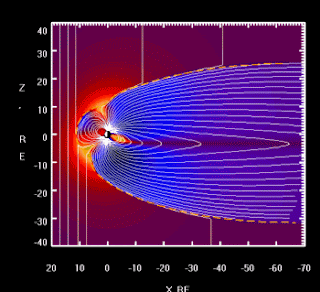Spiral arms
spiral arms are regions of that extend from the center of and These long, thin regions resemble a spiral and thus give spiral galaxies their name. Naturally, different classifications of spiral galaxies have distinct arm-structures. Sc and SBc galaxies, for instance, have very "loose" arms, whereas Sa and SBa galaxies tightly wrapped arms (with reference to the Hubble sequence). Either way, spiral arms contain a great many young, blue stars (due to the high mass density and the high rate of star formation), which make the arms so remarkable.
Using the Hubble classification, the bulge of Sa galaxies is usually composed of population II stars, that is old, red stars with low metal content. Further, the bulge of Sa and SBa galaxies tends to be large. In contrast, the bulges of Sc and SBc galaxies are a great deal lesser, and are composed of young, blue, Population I stars. Some bulges have similar properties to those of elliptical galaxies (scaled down to lower mass and luminosity), and others simply appear as higher density centers of disks, with properties similar to disk galaxies.
Many bulges are thought to host a at their center. Such black holes have never been directly observed, but many indirect proofs exist. In our own galaxy, for instance, the object calledis believed to be a supermassive black hole.







